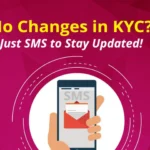Imagine this: You’ve just bought something online, maybe that cool gadget you’ve been eyeing for weeks or a service that promised to change your life. You’re excited. You’ve even got that feeling of satisfaction when your order is confirmed. But then, days turn into weeks, and nothing arrives. You reach out to the seller, but all you get are excuses or, worse, silence. You’ve been scammed.
- Step 1: Stay Calm and Gather Your Evidence
- Step 2: Report the Scam to the Seller or Website
- Step 3: Contact Your Bank or Payment Provider
- Step 4: Report the Scam to Consumer Protection Agencies
- Step 5: Spread the Word
- Step 6: Keep an Eye on Your Accounts
- Conclusion: How to Protect Yourself from Scams in the Future
It’s frustrating, isn’t it? The anger, the helplessness, and the sinking feeling that your hard-earned money is gone. You start to think, How could I have been so naive? Why didn’t I see the red flags?
But here’s the thing: You’re not alone. Online scams are on the rise, and many people find themselves in your shoes. But don’t worry—getting your money back is possible. It may take some effort, but with the right steps, you can fight back and recover what’s rightfully yours.

Step 1: Stay Calm and Gather Your Evidence
The first thing to do after realizing you’ve been scammed is take a deep breath. I know it’s easier said than done, but panicking won’t help. Focus on gathering all the evidence you can. Every piece of information is valuable. This includes:
- Screenshots of the website, product descriptions, and any messages exchanged.
- Email correspondence or chat logs with the seller or company.
- Bank or payment transaction details that show the amount paid and the recipient.
- Order confirmations or receipts you received from the scammer.
This will serve as your proof when you approach authorities or dispute the charge with your bank.
Real-Life Example:
A friend of mine, Ravi, once bought a phone from an online marketplace at what seemed like an unbeatable price. After waiting for weeks, he realized he had been scammed. However, because he had saved his transaction details and emails, he was able to file a chargeback with his bank, and within a month, he got his money back.
Step 2: Report the Scam to the Seller or Website
Before going down the legal path, it’s always good to try and resolve the issue directly. Start by contacting the seller or the website where you made the purchase. Most reputable platforms have a customer service team that can help you out. Politely but firmly explain the situation, providing them with the evidence you’ve gathered.
If you used a third-party payment service (like PayPal, Google Pay, etc.), make sure to report the issue through their dispute resolution system. Sometimes, these platforms offer buyer protection that could help you recover your funds.
Tip: Keep all your communication professional, even if you’re upset. Document everything.
Step 3: Contact Your Bank or Payment Provider
If the seller is unresponsive or refuses to refund your money, it’s time to bring in the big guns—your bank or payment provider. Whether you paid through your credit card, debit card, or an online wallet, your payment provider has a dispute resolution process that can help you get your money back.
For credit card payments, you can file a chargeback. A chargeback is essentially a reversal of the transaction, which the bank initiates on your behalf. Many banks offer chargeback options for fraudulent transactions, so this can be a good way to reclaim your money.
For payments made via platforms like PayPal or Google Pay, they often have buyer protection programs. Reach out to their support and file a claim immediately.
Real-Life Example:
Maya once found herself in a similar situation, having bought a product online that was never delivered. After reaching out to the seller and getting no response, she contacted her bank, which helped her initiate a chargeback. A week later, her money was refunded.
Pro Tip: Be mindful of your bank’s chargeback timeline. Some banks require you to file a dispute within 60-120 days, so act quickly!
Step 4: Report the Scam to Consumer Protection Agencies
In India, organizations like Cyber Crime Cell or Consumer Complaints Forums are your next line of defense. If the scam was serious or involved a larger financial loss, you can file a formal complaint with your local cyber crime cell or approach the National Consumer Helpline (NCH).
Many cities also have dedicated consumer courts where you can file a case. The process might take time, but it will help prevent the scammer from doing the same to others.
Step 5: Spread the Word
One of the most powerful things you can do after falling victim to a scam is to share your experience with others. Let your friends, family, and social media followers know what happened. You’d be surprised how many people benefit from hearing these stories. Plus, scammers tend to thrive on the lack of awareness, so spreading the word could prevent someone else from falling victim to the same scam.
Pro Tip: Write a review of the website or seller on trusted platforms like Trustpilot, Google Reviews, or Better Business Bureau. This helps warn other potential buyers.
Step 6: Keep an Eye on Your Accounts
Even after you’ve reported the scam and taken steps to get your money back, it’s a good idea to monitor your bank accounts, credit card statements, and any other payment platforms you use. Scammers often attempt to access your personal details or attempt additional unauthorized charges. Make sure to flag any suspicious activity as soon as you notice it.
Consider changing your passwords, enabling two-factor authentication, and reviewing your bank’s fraud protection options to stay safe.
Real-Life Example:
A friend of mine, Shankar, was scammed by a fake online store that stole his credit card details. After realizing the fraud, he immediately froze his card and contacted the bank. The bank froze his account, and while it took some time, they refunded all unauthorized charges.
Conclusion: How to Protect Yourself from Scams in the Future
Getting scammed online can feel like a violation of trust, but remember: it’s not your fault. Scammers are experts at making their schemes look legitimate. The good news is that with the right knowledge, you can get your money back and protect yourself in the future.
The key to staying safe is awareness. Always double-check the legitimacy of a website before making a purchase. Look for red flags like misspelled words, offers that seem too good to be true, or lack of contact information. Protect yourself by using trusted payment methods and enabling additional security features.
And remember: If you’ve been scammed, you don’t have to face this alone. There’s a system in place to help you, and by taking quick action, you can often get your money back.
So, the next time you’re about to make an online purchase, ask yourself: Am I sure this is legit? If you’ve been scammed, don’t give up. The road to recovery might be a little bumpy, but trust me, it’s worth the effort.










